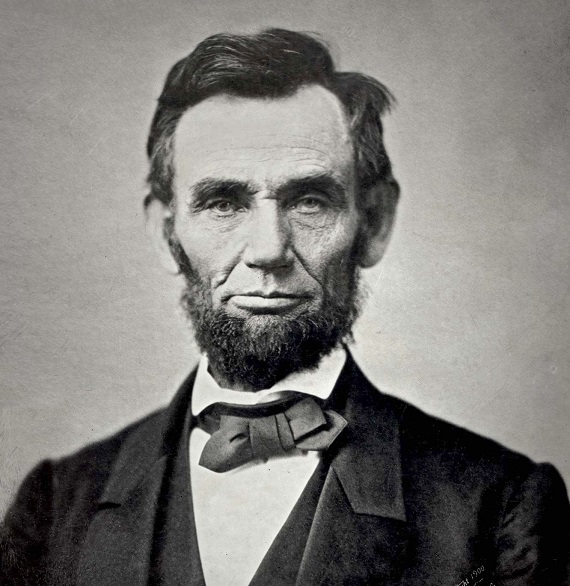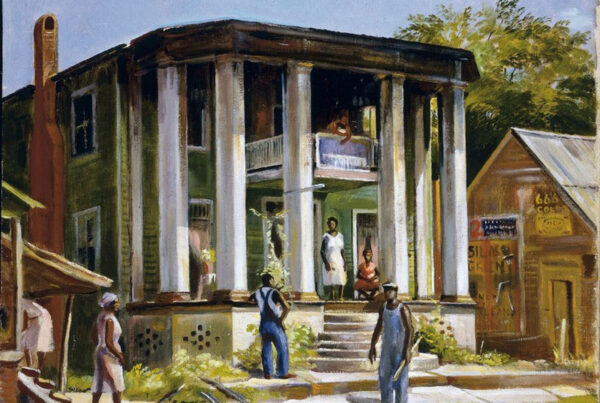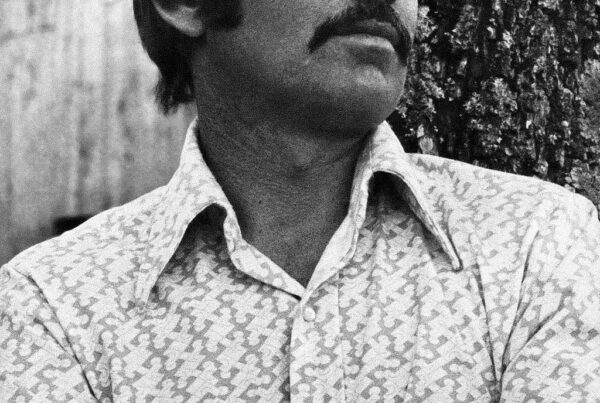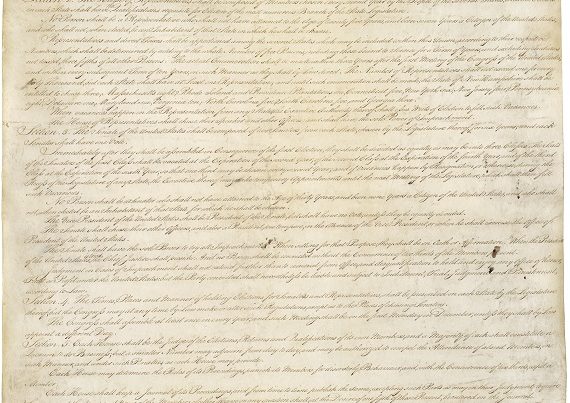Originally published by the Unz Review on 15 April 2015.
Back in 1990 in Richmond, Virginia, as part of the Museum of the Confederacy’s lecture series, the late Professor Ludwell Johnson, author and professor of history at William and Mary College, presented a fascinating lecture titled, “The Lincoln Puzzle: Searching for the Real Honest Abe.” Commenting on the assassination of Lincoln now 150 years ago, here is a portion of Dr. Johnson’s prepared remarks:
[After his death] for many, Lincoln became a symbolic Christ, for some, perhaps, more than symbolic. They could scarcely help themselves, the parallels were so striking. He was the savior of the Union, God’s chosen instrument for bringing the millenium to suffering humanity, born in a log cabin (close enough to a stable), son of a carpenter. . . . He was a railsplitter (close enough to carpentry), a humble man with the human touch, a man of sorrows and acquainted with grief, called by his followers to supreme greatness, struck down by Satan’s minions on Good Friday.Said one minister in his Black Friday sermon: ‘It is no blasphemy against the Son of God and the Savior of Men that we declare the fitness of the slaying of the second Father of our Republic on the anniversary of the day on which he was slain. Jesus Christ died for the world, Abraham Lincoln died for his country’. . . . Another spoke of his ‘mighty sacrifice . . . for the sins of his people.’ Yet another proposed that not April 15, but Good Friday be considered the anniversary of Lincoln’s death. ‘We should make it a movable fast and ever keep it beside the cross and grave of our blessed Lord, in whose service for whose gospel he became a victim and a martyr.’
For years after the war the rumor persisted that Lincoln’s tomb in Springfield was empty. Lincoln was also frequently compared to Moses, who led his people to the Promised Land that he was not allowed to enter, and, like Moses after viewing Canaan, was taken by death.
It is right and fitting, then, given the legacy now increasingly laid at Lincoln’s feet, the resultant and seemingly unstoppable growth of the “Behemoth” managerial state that has occurred since his presidency, and the anniversary of his death, to examine again his actual meaning in the context of our history.
Probably too much has been written about Abraham Lincoln. Most school age children know almost nothing about him, except that “he freed the slaves,” which, of course, is patently untrue: he freed not one slave. Yet, his looming presence as a pre-eminent national lodestar, his role as a kind of holy icon after death, and the radical task he accomplished in completely restructuring the original American nation that the Founders created, remain constantly with us. In a real and palpable sense, as the text excerpted from Professor Johnson shows, Lincoln immediately became the founder and canonized “saint” of a “new” nation, in which the ideas of “democracy” and “equality” were enshrined as bedrock principles.
As the late Professor Mel Bradford illustrates abundantly in his signal volume, Original Intentions, with Lincoln and his successors, concepts rejected outright by most of the Founders and eschewed by the Authors of the Constitution, replaced the original understanding of what this nation was supposed to be and represent. The Gettsyburg Address makes clear that Lincoln based the American founding on the Declaration of the Independence (“Four score and seven years ago….”) and on his shaky reading of that war time document.
As such, today the “high crimes and misdemeanors” that are the most heinous, the most grave, in our benighted land are “crimes” against “equality,” whether committed against racial minorities, or against “women,” or against homosexuals who want to force the rest of us to fully accept their lifestyle…and “crimes” against “full democracy,” including voter IDs, and preventing illegals from full participation in all the goodies that the Federal government can dole
This is not to say that there is an unbroken, direct line connecting the “Lincolnian Revolution” of the 1860s with the public and private defecated culture and corrupt and managerial political system that engulf us today. Indeed, the history of the USA since 1865 is filled with vicissitudes and “curves and variations.” It would be unfair perhaps to blame Lincoln directly for these present happenings. Indeed, more than likely, as a 19th century liberal, he would be offended and shocked by much of what besets us today culturally and socially. But Lincoln, like other leaders of 19th century Liberalism, opened the door to future, much more radical change. So, while it is assuredly not correct to hold him responsible for, example, same sex marriage, there is a torturous genealogy that can be traced without injury to the historical narrative.
Of those radical changes that came as a result of the Lincolnian Revolution and that directly affect us today, the cataclysmic effects of the (illegally passed) 14th Amendment must be highlighted. Indeed, one could suggest that it is under the rubric of the 14th Amendment that most all of our present decay and distress has occurred. If there had been no 14th Amendment, would most of the horrendous court decisions we’ve seen have been rendered? Yet, the 14th Amendment grows directly out of the consequences of Southern defeat in 1865, in a War begun by Abraham Lincoln.
Certainly, there are those who would argue that the “Reagan years” or even the 1920s represented respites in this ongoing revolution. Nevertheless, the general and overwhelming propulsive movement, the historical dynamic, has been in just one direction. In sum, the triumph of the Lincolnian Revolution in the American nation was, in fact, the real triumph of the 19th century “Idea of Progress” and the belief in the inevitable and continuing liberation and enhancement materially and intellectually, of human kind.
It is interesting, I think, to focus the great Iliad of the Confederacy in the context of the brutal and vicious universal war between the forces of 19th liberalism and the forces of tradition and counter-revolution. The Confederacy, the old South, played a not unimportant role in that conflict, and, even if most Southerners did not recognize that context at the time, many European traditionalists, Legitimist royalists, and Catholics most certainly did.
In my research over the years, specifically while I studied in Spain and Switzerland, and then taught in Argentina, I was struck by the fact that almost without exception, all 19th century traditional conservatives, Legitimists, and Catholics not only favored the Confederacy in its crusade against the North, but they did so enthusiastically, to the point that thousands of European traditionalists found their way to cities like New Orleans to volunteer to fight for the Confederate cause. As many as 1,800 former soldiers of the old Bourbon Kingdom of Naples (Two Sicilies) arrived in Louisiana in early 1861 to offer their services to the South after their defeat by the arms of the liberal Kingdom of Piedmont-Savoy. Volunteers from the Carlist Catholic traditionalists in Spain came by way, mostly, of Mexico. According to Catalan historian, David Odalric de Caixal, as many as many as 4,000 Carlists enlisted in Confederate ranks, many in the Louisiana Tigers (see M. Estella, “Un historiador investiga la presencia de carlistas en la Guerra de Secesion,” El Diario de Navarra [Pamplona], December 9, 2011). French Legitimists (the “ultra-royalists” who opposed the “democracy” of the Citizen-King Louis Philippe) also volunteered, mostly notably the Prince Camille Armand de Polignac, a hero of the battle of Mansfield.
The recently exiled (1860) duke Francesco V of the Italian Duchy of Modena (called by modern writer and historian Sir Harold Acton, “the most reactionary ruler in all of Europe”), actually recognized the Confederacy. And Pope Pius IX offered de facto recognition to the Confederate cause, and his sympathies were quite open, as were the Confederate proclivities of the official publication of the Vatican, “La Civilta Catolica.” The Crown of Thorns, a relic long associated with Pius IX and President Jefferson Davis, remains in a museum in New Orleans, along with a supportive and precious personal message from the pope to the Confederate leader.
And who can forget the favor given by and collaboration of the Habsburg emperor of Mexico, Maximilian? It was to his empire that many Confederate soldiers fled after Appomattox and Palmito Ranch. (Recall the John Wayne classic, “The Undefeated,” and other cinematic representations of that relationship?)
The traditionalist press in Europe openly believed that the Confederacy was part of a much greater conflict—a conflict, a universalized war, to halt the advance of the effects of the French Revolution, and to–if possible–reverse the worst aspects that resulted from the opening of that Pandora’s Box. And in particular, they visualized the Confederacy as a co-belligerent in the effort to stop the growth of “democratism” and “egalitarianism.”
Certainly, one can debate if this vision by European traditionalist conservatives was completely valid, or mere fancy. But the reasons supporting it, given our subsequent history, are strong in an ex post facto way.
What we are talking about is, then, the triumph in the 19th century of a radical transformation in the way our society and our citizens look at history and change. Indeed, the result was the enthronement of the “Idea of Progress” as the norm, such that movement in history always is “progressive” or, better described, “a la Sinistra”–to the Left. And, given this template, does not the ongoing Leftward—“progressive”—movement of both Democrats AND Republicans in the US, as well as both Socialist and establishment “conservative” political groupings in Europe, make sense?
Until this narrative–this sanctified and blessed “progressivist” idealization–is overturned and reversed, we shall continue to be at the mercy of faux-conservatives who continue to lead us into more Revolution, even if by a slightly different route from the hardcore revolutionaries.
Thus, Professor Johnson’s account of the apotheosis of Lincoln and the enshrining of the “Lincoln Myth” go hand-in-hand with the mythologization of Garibaldi in Italy, or of Louis Blanc in France, as symbolic of what happened to an older, pre-Revolutionary civilization…and to the “exceptional” American nation along the way.
In the USA it really began in earnest, as Ludwell Johnson recounts, almost immediately after Lincoln’s death, and it continues full force today.







